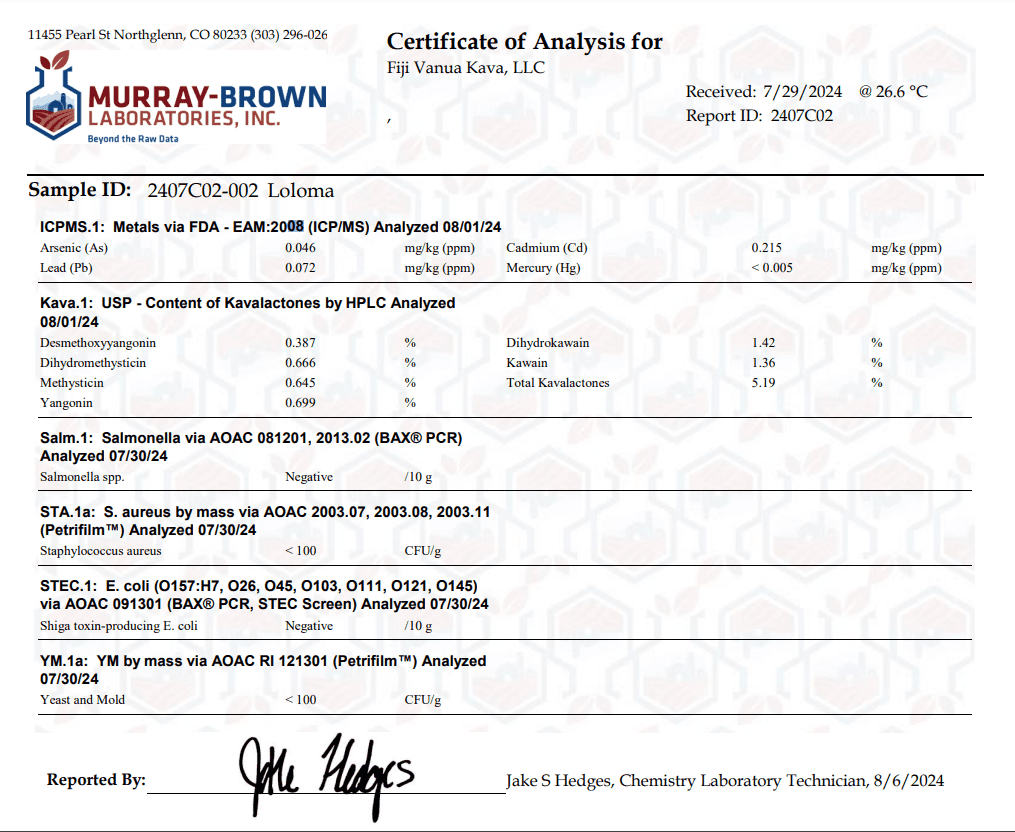Kava Chemotypes: A Comparative Analysis
Kava, the revered Pacific Island beverage with calming and mood-lifting properties, is becoming increasingly popular worldwide. But did you know that different kava varieties can produce distinct effects? This difference boils down to kava chemotypes, a complex but fascinating concept that unlocks the secrets of kava’s diverse experiences. This blog delves into the world of kava chemotypes, empowering you to navigate the diverse kava landscape and choose the kava best suited for your needs. We’ll explore what chemotypes are, how they’re identified, and how they influence kava’s effects.
Unveiling the Kavalactone Chemistry: 6 Digit Code
Kava’s magic lies within its unique chemical makeup, primarily in a group of compounds called kavalactones. These potent molecules are responsible for kava’s calming, relaxing, and mood-lifting effects. However, different kava varieties boast varying kavalactone profiles. This variation is the essence of kava chemotypes. Each chemotype reflects the specific ratios of the six major kavalactones:
- Desmethoxyyangonin (DMY) – #1
- Dihydrokavain (DHK) – #2
- Yangonin (Y) – #3
- Kawain (K) – #4
- Dihydromethysticin (DHM) – #5
- Methysticin (M) – #6
Cracking the Chemotype Code
Kava chemotypes are represented by a six-digit sequence, where each number corresponds to a specific kavalactone, listed in descending order of abundance. For example, a chemotype of “426135” indicates that Kawain (#4) is the most prevalent kavalactone, followed by Dihydrokavain (#2), Yangonin (#3), and so forth, with Methysticin (#6) being the least abundant.

Understanding what each number signifies is key:
- Numbers in the first or second position (e.g., 4 or 2): These kavalactones are typically associated with the “heady” effects of kava. They promote a sense of mental relaxation, enhanced mood, and a mild mind-lift.
- Numbers towards the middle (e.g., 3 or 1): Kavalactones in this position are often linked to the “body” effects of kava, inducing muscle relaxation and a sense of calm.
- Numbers in the last positions (e.g., 5 or 6): These kavalactones are generally considered to contribute more to the “heavy” effects of kava, characterized by a pronounced feeling of sedation and potentially stronger numbing effects.
Important Note: This is a simplified interpretation, and the actual effects can be influenced by interactions between various kavalactones and other compounds present in kava.
Kava Chemotypes:A Spectrum of Experiences
By understanding dominant kavalactones in a chemotype, you can gain a general idea of the experiences or effects a particular kava variety might induce:
- Chemotypes with Kavain (4) or Dihydrokavain (2) dominant (e.g., 426135 or 243156): These kavas are often considered ideal for daytime consumption. They promote a sense of well-being, relaxation, and improved mood while maintaining a degree of mental clarity.
- Chemotype with a balance of Kavain (4), Yangonin (3), and Desmethoxyyangonin (1) (e.g., 432156): These kavas offer a well-rounded experience, promoting relaxation, mood elevation, and a sense of calm.
- Chemotype with Yangonin (3) or Desmethoxyyangonin (1) dominant (e.g., 342156 or 132456): These kavas are known for their milder, uplifting effects, potentially promoting a sense of relaxation and social ease.
- Chemotype with Dihydromethysticin (5) or Methysticin (6) dominant (e.g., 543216 or 654321): These kavas are generally considered to be more potent and may induce a pronounced feeling of sedation and muscle relaxation. They are often preferred for nighttime consumption to promote deeper relaxation and restful sleep.
Remember: This is a general guide.
Factors Influencing Kavalactone Content
The kavalactone content is influenced by several factors, including:
- Plant Variety: Different cultivars exhibit distinct kavalactone profiles. For instance, heavy kava Vanuatu generally contain higher kavalactone levels than heady tongan kava.
- Plant Part: Roots typically have higher kavalactone concentrations compared to rhizomes or stems. For example, premium old roots powder typically have higher kavalactone concentrations compared to lewena powder.
- Geographic Location and Harvest Time: Environmental conditions and the timing of harvest can significantly affect the chemical composition of kava.
Finding Your Perfect Kava Match
Understanding the chemotypes of kava is crucial for both consumers and producers, as it directly impacts the beverage’s effects and quality. With a newfound understanding of kava chemotypes, you can embark on a personalized kava experience. Consider your desired effects _ whether you seek relaxation, stress relief, improved sleep, or a mood boost _to guide your choice.
Are you looking for a relaxing kava, not as heavy? Loloma Waka is your right choice.Or perhaps you want something to help with stress-relieving or anxiety? give a try to Kelai. Fiji Vanua Kava
offers a variety of other high-quality kava products to suit your needs.
Disclaimer:
It’s important to note that kava can interact with certain medications and may not be suitable for everyone. Always consult with a healthcare professional before consuming kava if you have any underlying health conditions or are taking medications.
References
- Siméoni, P., & Lebot, V. (2002). Identification of factors determining kavalactone content and chemotype in Kava (Piper methysticum Forst. f.). Biochemical systematics and ecology, 30(5), 413-424.
- Wang, J., Qu, W., Bittenbender, H. C., & Li, Q. X. (2015). Kavalactone content and chemotype of kava beverages prepared from roots and rhizomes of Isa and Mahakea varieties and extraction efficiency of kavalactones using different solvents. Journal of food science and technology, 52, 1164-1169.

